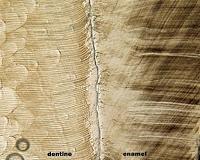| . |  |
. |
Washington (AFP) Jan 6, 2010 A new kind of brain scan seems to be better at detecting early signs of change related to the onset of Alzheimer's disease, new research published Wednesday in the online issue of Neurology found. The scan, called diffusion tensor imaging (DTI), could prove important to earlier detection and in turn better treatment. "As better medicines for Alzheimer's disease become available, it will be important to identify people at high risk for the disease as early and accurately as possible so treatment can be most effective," said Norbert Schuff of the University of California San Francisco, who wrote an editorial about the study. The DTI-MRI, more sensitive than traditional MRI for detecting changes in brain chemistry, allows for mapping fiber tracts that connect brain regions. Researchers looked at 67 healthy people in Rome aged 20-80. "Our findings show this type of brain scan appears to be a better way to measure how healthy the brain is in people who are experiencing memory loss. This might help doctors when trying to differentiate between normal aging and diseases like Alzheimer's," said author Giovanni Carlesimo, PhD, with Tor Vergata University in Rome. "DTI, along with MRI, could serve as an important tool in understanding how and why a person experiences memory decline," he added An estimated 37 million people worldwide, including 5.3 million in the United States, live with dementia, with Alzheimer's disease causing the majority of cases, according to the World Health Organization (WHO). With the aging of populations, this figure is projected to increase rapidly over the next 20 years.
Share This Article With Planet Earth
Related Links All About Human Beings and How We Got To Be Here
 First Molars Provide Insight Into Evolution Of Great Apes And Humans
First Molars Provide Insight Into Evolution Of Great Apes And HumansTempe AZ (SPX) Jan 05, 2010 The timing of molar emergence and its relation to growth and reproduction in apes is being reported by two scientists at Arizona State University's Institute of Human Origins in the Dec. 28 online early edition of the Proceedings of the National Academy of Sciences (PNAS). From the smallest South American monkeys to the largest African apes, the timing of molar development and eruption is ... read more |
|
| The content herein, unless otherwise known to be public domain, are Copyright 1995-2009 - SpaceDaily. AFP and UPI Wire Stories are copyright Agence France-Presse and United Press International. ESA Portal Reports are copyright European Space Agency. All NASA sourced material is public domain. Additional copyrights may apply in whole or part to other bona fide parties. Advertising does not imply endorsement,agreement or approval of any opinions, statements or information provided by SpaceDaily on any Web page published or hosted by SpaceDaily. Privacy Statement |